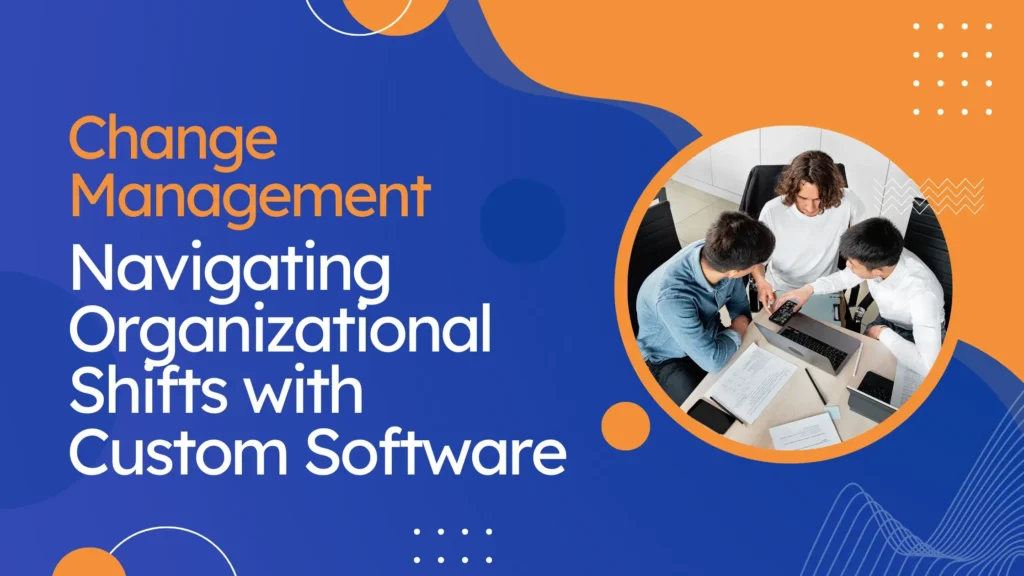Change management manages change, whether it’s an organizational shift or a technology implementation. This article explores what change management entails and how to navigate it without triggering resistance or backlash.
Change management
Change management is a process that helps organizations and individuals adapt to change. It’s about helping people move from where they are to where they need to be, whether that means shifting roles or responsibilities or getting used to new ways of doing things.
Change management can help you adjust after an organizational shift like a merger or acquisition or be used as part of your regular internal processes (e.g., onboarding new hires).
Change management is essential because it helps ensure that people and processes are up to speed with the latest developments. It also ensures that employees feel supported and motivated during the transition, which can help improve retention rates and productivity.
Organizational shifts
In organizational change management, it’s essential to understand that change is a natural part of corporate life. Change can be positive or negative, planned or unplanned, incremental or radical, and even permanent or temporary. It can also come from internal sources (within an organization) as well as external sources (outside of an organization).
Many people associate change with “new” things, such as releasing a new software product line. Individuals need to embrace these changes as opportunities for growth rather than resist them out of fear or uncertainty about what lies ahead.
Custom software consulting
Software consulting is a broad term encompassing many different types of services. A software consultant is someone who provides software consulting services, which may include:
- Identifying and understanding client needs, goals, and objectives
- Developing and implementing solutions to meet those needs and achieve those goals using custom-built software applications or buying off-the-shelf products (known as “offshore development”)
There are many other types of consultants, such as financial and marketing. Still, we’ll focus on the subset known as custom software consulting since this blog post is all about it! Custom software consulting is when a consultant creates custom application(s) for clients based on their unique business requirements.
Software implementation
Implementing a new software product requires planning, testing and training, change, and project management. It also involves communication with users to ensure they understand how to use the product effectively and good documentation.
The best way to ensure that your organization’s needs are met is by choosing a software product that meets those needs in the first place. This means having an open mind about what features may be helpful for your business; it could be something as simple as automatic data backups or more complex offerings such as real-time analytics capabilities through machine learning algorithms.
Once you’ve identified the features you need, consider how easy it will be to integrate them into your existing technology stack. This is especially important for companies with custom-built applications or relying heavily on third-party software. You’ll also want to look at the vendor’s support and upgrade path.
Organizational change management
Change management is the process of managing change in an organization. It involves not only technology but also people and processes throughout the organization.
Change management is a continuous process that must be managed carefully to ensure success. This includes understanding what type of change you are trying to implement, who will be affected by this change and how they feel about it, identifying any potential risks associated with implementing this new initiative (e.g., budgeting), developing strategies for overcoming any obstacles that may arise during implementation (e.g., training sessions), communicating regularly with stakeholders throughout the performance. Hence, they remain up-to-date on progress made thus far (or lack thereof), etcetera…
Digital transformation
Digital transformation transforms an organization’s business model, workflow, and culture with technology.
Digital transformation is one of the most critical topics in the tech industry today. It’s also one of the most challenging for businesses to navigate because it requires a complete change in how they operate, from how they market themselves to customers to how employees interact with each other and their jobs.
If you’re new to digital transformation or need help managing your company’s efforts toward it, here are some tips:
- Start with the end in mind.
- Before you begin, ensure your company clearly defines what it wants to achieve with digital transformation.
- You can outline your goals and milestones for each project using a project plan, such as Microsoft Project or Asana.
- Keep this plan updated throughout the process so everyone knows when to work on which tasks.
Technology is critical in many organizational changes but can also cause them.
The following examples illustrate how technology can be both:
- Technology changes the way we do things. New software makes it easier for employees to do their jobs, which may increase productivity and improve customer service. Employees are more productive when they access tools that make their work more efficient or enjoyable.
- For example, if you’re building an app that helps people manage their finances better, you could offer features like integrated budgeting tools or automatic alerts when bills are due so they don’t forget anything important! This will make your app stand out from competitors who don’t offer these features, which means more customers are signing up with yours instead!
Technology creates new ways of doing things. New technologies can make it easier for humans to perform previously very difficult (or impossible!) tasks.
For example, if you’re building an app that helps people manage their finances better, you could offer features like integrated budgeting tools or automatic alerts when bills are due so they don’t forget anything important! This will make your app stand out from competitors who don’t offer these features, which means more customers are signing up with yours instead.
Conclusion
Change management is critical to any organization’s ability to adapt and grow. Custom software consulting allows you to maximize technology’s potential while minimizing risks.
Looking to shape your business through Change Management? Everite Solutions specializes in helping businesses strategize and achieve their goals. Our expert team of consultants can help you leverage the power of custom software to shape your business effectively.
Visit our website, www.everitesolutions.com, to learn more about our custom software consulting services. Contact us at info@everitesolutions.com or +1 404-835-1605 to schedule a consultation and discover how Everite can help shape your business’s future.







